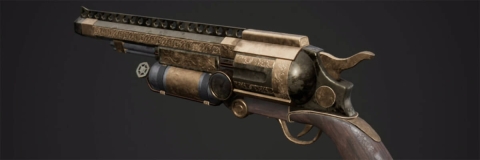

Computer games art and design courses portfolio guide
How to put together a creative portfolio for your course
You'll need this guide if you're applying for one of the following courses and do not have a relevant subject:
What to include in your portfolio
We’d like to see a range of examples of computer game art and design development.
Content should include at least one of the following:
- 2D and/or 3D animation
- Character models
- Character development process
- Environment development process
- Examples of scripting for games
- Games design content such as storyboards, concept designs, developed levels, mood boards,
- Game genres
- Imaginary worlds/architecture
- Playable game levels
- Texture and lighting models and/or studies
Each piece of work must include a brief description. If produced in response to a brief, please indicate what the brief asked you to do. As evidence of your communication skills, annotate your portfolio with comments and reflections on the work.
What we’re looking for:
We're looking for your portfolio to show your:
- Understanding of computer games art or design and related technologies as a subject, including its practical application
- Applied game development skills
- Ability to reflect on what is, and is not, successful about your work
- Enthusiasm and commitment to study computer games art or design at university level
- Initiative, creative flair and ability to learn in a creative environment
- Learning of the technical and theoretical aspects of computer game development.
Your portfolio must show your experience of one or more of the following:
- Character development
- Character or environment modelling and development (using 3D Studio Max and Maya)
- Drawing
- Game design
- Programming or scripting for games (using C#/C++ or UE Blueprints)
- Storytelling
- Visual research
Your portfolio should show a range of key abilities and core knowledge, including some:
- Original game idea generation
- Conceptual development
- 3D modelling using appropriate professional software such as 3D Studio Max, Maya, or Blender
- 2D art, both traditional and digital
- An ability to select and present a range of work to a professional standard
- Programming in C#, C++ or Scripting (such as UE Blueprints) – if you're a Computer Games Art applicant, this applies if you have an interest in Technical Art
Further requirements by portfolio type
Ideally, you should submit 15 static images and/or 4 30-second animations.
Images that relate directly to one of your computer game examples of finished work
This should show your design process and your working methodologies – for example:
- design planning
- idea generation
- observations
- research into game design and development
- sketches
- visual experiments
We want to see images from your workbooks and sheets of developmental work.
Photographs of any 3D projects
These can include sculpture, ceramics, or model making.
Drawing ability is a must, so demonstrate your ability to draw freehand, life drawing, and observational drawing using a variety of mediums (such as pastel, gouache, charcoal, and pencil).
You should submit:
- Games design content such as storyboards, concept designs, developed levels, and mood boards covering at least two distinct projects – either for physical (table top/board/card) or computer games
- Implementation of at least one of the above designs, demonstrated with a narrated video validating the appropriateness of the content
You should submit a working program that addresses an art related theme (e.g. Maya-scripted plugin) along with the annotated code you wrote, and a written or video description describing what you were trying to achieve, the challenges you faced, and how you overcame them.
You should also demonstrate your art-related skills with supporting art-focused examples (see 'Art-focused portfolios’).
You should submit a working program along with the annotated code you wrote, and a written or video description describing what you were trying to achieve, the challenges you faced, and how you overcame them.
Programming ability is critical if you intend to join the programming design pathway in the second or final years, so showing a knowledge of C++/C#/Scripting is essential.

After you apply for an undergraduate course
Once you've applied for university, there's still lots you can do while you wait for a decision on your application.
Contact us
Any questions? Contact the Faculty Student Recruitment Team.
Phone: +44 (0)23 9284 2990
Email: cci-enquiries@port.ac.uk
